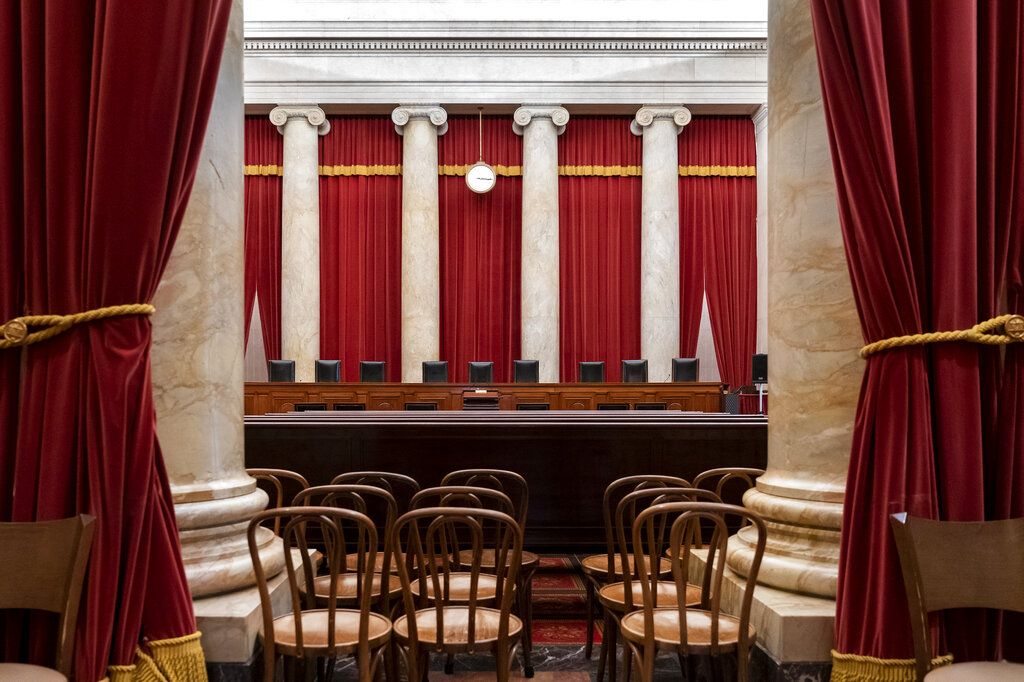
Justices on the Supreme Court are not due to return to their chambers for another six weeks, but the summer has been anything but quiet for the nine black robes.
On Thursday, the high court agreed to revive part of a Republican-backed Arizona law that aims to deter illegal voting in the state. They also decided last Friday to keep holds on new Title IX guidelines for schools in 26 states while lower court challenges proceed, a short-term win for conservative litigants who argued the updated sex and gender definitions would harm and discriminate against women’s privacy rights and fairness in sports.

The back-to-back activity stems from the high court’s emergency docket, where the justices handle questions that percolate to their chambers and typically require faster resolution than it would normally take to weigh briefs, schedule oral arguments, and draft formal opinions like they typically do from October to June of each year.
This increase in summer workload is a phenomenon that has ramped up in recent years and has even drawn scrutiny from some legal analysts, such as Steve Vladeck, a Georgetown University Law Center professor who has written books critical of the Supreme Court’s so-called “shadow docket.”
Matters that bubble up to the high court in the summer months typically deal with narrow questions of how to rule on an issue while the broader legal process plays out in lower courts. The criticism stems from the justices deciding whether to allow or disallow an injunction on some degree or portion of a law in question, thereby causing real-world impacts before the legal fight is further developed along the normal appeals track line.
“By the time the Court disposes of (17) pending applications, it will have decided at least *25* since rising for its summer recess,” Vladeck posted to X, earlier this week.
The last time the high court’s summer was this busy was during the COVID-19 pandemic in 2020, when there were at least 21 applications rising up during the court’s seasonal break. in 2021, 2022, and 2023, the range was between six and 15 applications per summer.
Vladeck said even if the docket activity were to slow down in the next six weeks, the justices are on track for the “busiest summer in quite some time—if not ever.”
Legal experts have raised a number of potential causes for the uptick in summer work for the nine justices. In response to Vladeck’s tally of applications on X, Missouri Solicitor General Josh Divine argued the high court is not to blame for the number of emergency applications, but rather it is the fault of President Joe Biden’s administration for inviting a flurry of challenges to last-minute policy changes.
“The Biden admin chose to roll out tons of new, major rules all at once in April and May to avoid a future Congress being able to repeal them,” Divine said.
While not every emergency application stems from challenges to federal agency rules, the justices are preparing to answer to at least two emergency disputes stemming from Biden’s agenda, including efforts to implement a sweeping student loan relief plan and its environmental air pollution policy.
Another pending fight surrounds a challenge from Oklahoma over Biden’s requirement for family planning clinics that receive federal public health funding to provide referrals for abortions to patients who request it.
While some legal observers view the current schedule as surprising, if not at least exhausting, even some members of the high court have suggested that the summer schedule is becoming harder to manage.
In January, during an appearance at University of California, Berkley’s law school, 70-year-old liberal Justice Sonia Sotomayor talked about the emergency calendar being “much more active” in recent time, noting she is personally “tired.”
“There used to be a time when we had a good chunk of the summer break. Not anymore. The emergency calendar is busy almost on a weekly basis,” the justice said.
Notably, liberal Justice Elena Kagan brought up a similar feeling during a recent public talk.
“Our summers used to be actually summers,” Kagan told group of judges in California. “We’ve gotten into a pattern where we’re doing too many of them.”
It’s not immediately clear what the result of maintaining a higher degree of work in the summer months could be for the court during its normal fall to spring session, although some experts have speculated the justices are creating a sort of “backlog” that could serve as a temporary norm for the high court, according to Bloomberg.
So far, the justices have granted more than 24 cases to be heard in the upcoming term, which is technically fewer than the number that is typically needed to fill up the calendar from October to December, the first half of the term.
CLICK HERE TO READ MORE FROM THE WASHINGTON EXAMINER
The justices will return to Washington, D.C., in late September for their annual long conference, where they are sure to add more cases to their docket, in addition to a hefty number of rejections.
Oct. 1 is a Tuesday this year, meaning the justices will commence their term during the first full week of the month beginning on Oct. 7.






